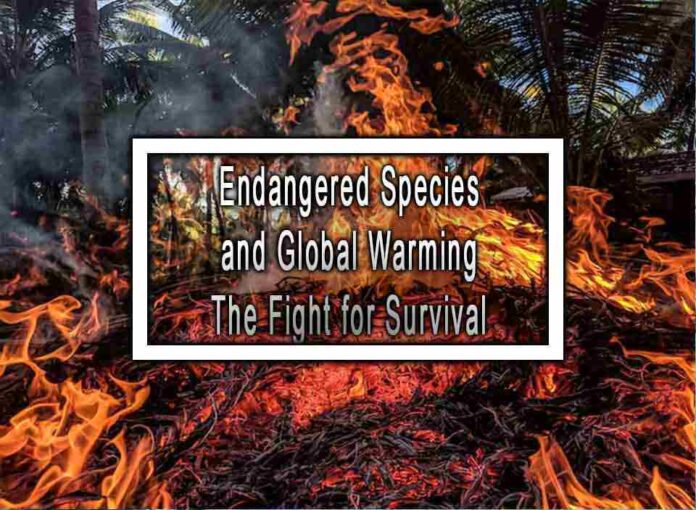Global warming and climate change pose significant threats to many endangered species around the world, exacerbating existing challenges to their survival. The impacts of climate change, such as rising temperatures, shifting weather patterns, and habitat loss, further endanger vulnerable species and ecosystems. Here are some ways in which global warming affects endangered species and the ongoing fight for their survival:
1. Habitat Loss and Fragmentation:
Global warming contributes to the loss and fragmentation of natural habitats due to rising sea levels, increased wildfires, and changes in precipitation patterns. This can disrupt ecosystems, making it difficult for endangered species to find suitable habitats for breeding, feeding, and shelter.
2. Altered Migration Patterns:
Some species rely on specific climate conditions for their seasonal migrations, breeding, or foraging. As climate zones shift, many species struggle to adapt, leading to disruptions in their migration patterns and potentially affecting their ability to find food and suitable breeding grounds.
3. Sea-Level Rise and Coastal Erosion
: Rising sea levels threaten coastal habitats and nesting sites for endangered species, such as sea turtles and certain bird species. It also impacts coastal wetlands, which are critical habitats for various species.
4. Coral Bleaching:
Increasing ocean temperatures contribute to coral bleaching events, which harm coral reefs and the marine species that depend on them for survival. Coral reefs are essential ecosystems that support a vast array of marine life.

5. Impact on Food Chains:
Global warming can alter the abundance and distribution of prey species, affecting the entire food chain. This disruption can lead to imbalances in ecosystems, impacting endangered species and their predators.
6. Extinction Risk:
As the rate of climate change exceeds the natural adaptation capabilities of many species, their risk of extinction increases. Climate change acts as an additional stressor on top of other threats, such as habitat destruction and poaching.
7. Phenological Mismatches:
Global warming can cause shifts in the timing of critical natural events, such as flowering, migration, and hatching. If species’ life cycles become out of sync with their food sources or other ecological interactions, it can have severe consequences for their survival.
8. Limited Adaptive Capacity:
Some endangered species have limited abilities to adapt to rapid changes in their environment. Those with small populations, restricted ranges, or specialized habitats are particularly vulnerable.
The fight for the survival of endangered species in the face of global warming is a complex and urgent task that demands collective action and a commitment to preserving the Earth’s biodiversity for future generations.










